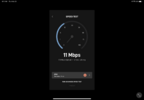dhanson865
Well-Known Member
I am one of those whose price is going up this year. When I look at the availability map at Starlink, I am in a cell with waitlisting, presumably "congested" (I believe I was the first home in that cell). Roughly 2 miles away is the next cell, with availability. I assume that the price in that cell went down.
The funny thing is I am aware of only one other house within 2 square miles that has Starlink, and they only visit on weekends. There may also be no more in a much larger area, I am just not sure. So, does Starlink consider one or two homes per 2 square miles congested? It seems a little strange. I get good speeds (200 mbps) and virtually never have problems with streaming, etc.
Further, when I hover on the map over my cell, it says "Expanding in 2023". I really hope that means that once my extremely rural, spread out, unpopulated area gets "expanded" service, my pricing will fall to the lower tier. It would be nice to know.
I fully expect your situation in Idaho to move you down to the lower price level later this year. Especially if you aren't in that cluster west of Boise.



